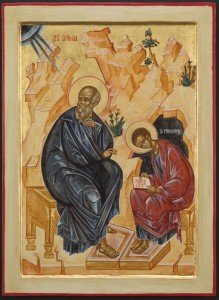 The next book in the chronologically ordered New Testament is the Gospel of John. While John’s Gospel is different from the synoptic gospels, its language has shaped Christian understandings of Jesus and his significance perhaps even more than the first three gospels. Its language is both familiar and beloved by many Christians.
The next book in the chronologically ordered New Testament is the Gospel of John. While John’s Gospel is different from the synoptic gospels, its language has shaped Christian understandings of Jesus and his significance perhaps even more than the first three gospels. Its language is both familiar and beloved by many Christians.
Consider these things in John’s Gospel:
Jesus is the Word of God become flesh — the Word that was in the beginning with God and was God. The language is not only familiar, but also the basis of the Christian doctrine of the Incarnation.
Probably the best-known verse in the New Testament is John 3:16: For God so loved the world that he gave His only Son, so that everyone who believes in Him may not perish but may have eternal life. It is often quoted as a summary of the Christian message and even shows up behind the goal posts at professional football games.
John’s well-known stories include the wedding feast at Cana where Jesus changed water into wine; Nicodemus and the teaching on being born again; the Samaritan woman at the well; Lazarus and resurrection; Jesus’ appearance to Mary Magdalene near the empty tomb and his showing of his wounds to doubting Thomas.
John’s series of I AM statements presents familiar metaphors for Jesus: the Bread of Life; the Light of the World; the Good Shepherd; the Gate or the Door; the Resurrection and the Life; the Way and the Truth; the Life; the True Vine; and also simply I AM. Because John presents these as statements of Jesus, Christians for centuries have taken it for granted that Jesus said these things about Himself.
None of the above is found in the synoptic gospels. Moreover, there are other differences. In the synoptics Jesus frequently teaches with parables. In john, He does not. Instead, He often speaks in extended and complex discourses. One is five chapters long. In the synoptics, Jesus is an exorcist. In John, there are no exorcisms. In the synoptics, Jesus’ public activity is mostly in Galilee. Only his final journey to Jerusalem takes him south to Judea. In John, Jesus has several periods of public activity in Judea and Jerusalem. In the synoptics, there is one Passover; in John, three. And, perhaps most strikingly, in the synoptics Jesus’ divine identity and status are not part of his teaching. In John they are.
Again, we must always remember that all of the gospels were written for different reasons and even different audiences. They are not history, although based on history.
